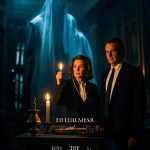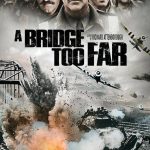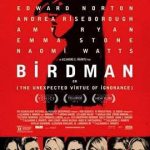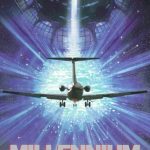The Mummy (1999)
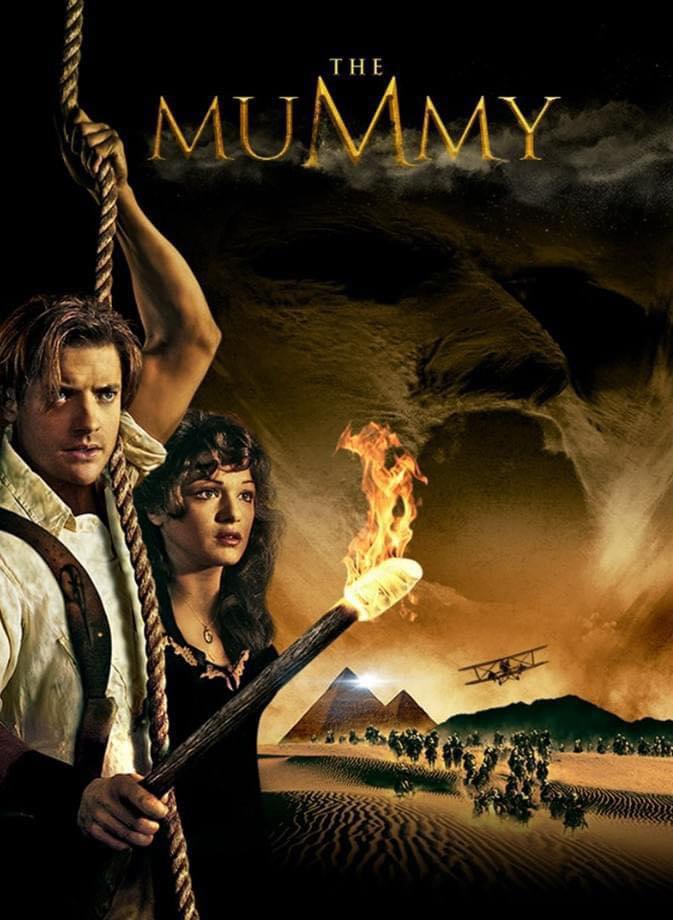
“The Mummy” (1999), directed by Stephen Sommers, is a high-octane adventure that combines elements of horror, comedy, and romance with a swashbuckling spirit reminiscent of classic films like “Indiana Jones.” Released by Universal Pictures, it serves as both a remake of the 1932 horror classic starring Boris Karloff and a revitalization of the studio’s iconic monster movie legacy. The film proved to be a commercial success and kickstarted a franchise, carving out a special place in late-90s pop culture. While it may not be high art, The Mummy offers a well-balanced blend of humor, action, and suspense that has made it a beloved film over the decades.
Suggested videos for you:
Plot Overview
Set in 1926, The Mummy follows adventurer and former French Foreign Legion officer Rick O’Connell (Brendan Fraser) as he leads librarian and aspiring Egyptologist Evelyn Carnahan (Rachel Weisz) and her bumbling brother Jonathan (John Hannah) to the lost city of Hamunaptra. Little do they know, their expedition will awaken the cursed high priest Imhotep (Arnold Vosloo), who was entombed alive thousands of years earlier for trying to resurrect his forbidden love, Anck-su-Namun (Patricia Velásquez). Once resurrected, Imhotep seeks to bring Anck-su-Namun back to life, wreaking havoc with ancient plagues and powerful sorcery as Rick, Evelyn, and Jonathan race against time to stop him.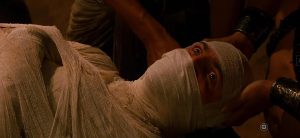
Themes and Symbolism
Although The Mummy is often viewed as light entertainment, it offers underlying themes of redemption, loyalty, and the eternal consequences of obsession. Imhotep’s story is rooted in tragic love, as his downfall begins with an affair that leads to betrayal and execution. His relentless pursuit of Anck-su-Namun in the afterlife mirrors the trope of a love so powerful it defies death itself, albeit twisted by his willingness to sacrifice others for his ends.
Rick O’Connell, on the other hand, represents the classic reluctant hero. Initially motivated by profit and survival, his character evolves through his loyalty to Evelyn and her mission. His journey is one of self-discovery and courage, reinforcing themes of redemption and the idea that even self-serving individuals can rise to the occasion when true purpose calls.
Evelyn embodies the spirit of curiosity and determination. Her transformation from a bookish, somewhat clumsy librarian to a brave and proactive adventurer illustrates themes of growth and the pursuit of knowledge, even in the face of supernatural danger. This contrasts with the misguided quest for knowledge that dooms characters like Dr. Allen Chamberlain (Jonathan Hyde) and other treasure hunters, who become victims of their greed.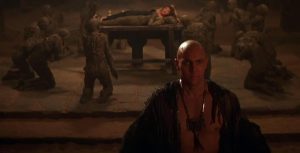
Visual and Artistic Execution
Stephen Sommers’ direction is energetic, ensuring the film is packed with fast-paced sequences and grand set pieces. From its sweeping shots of the sun-scorched desert to the claustrophobic tunnels of Hamunaptra, the cinematography by Adrian Biddle is designed to immerse the audience in an epic adventure. The use of wide landscapes contrasts sharply with the more intimate scenes, adding a layer of suspense when the characters are navigating ancient catacombs or fleeing from hordes of mummified warriors.
The visual effects were groundbreaking for their time, courtesy of Industrial Light & Magic (ILM). While some effects may appear dated by modern standards, the resurrection scenes, plague sequences, and the digitally-rendered Imhotep were state-of-the-art in 1999 and contributed to the film’s spectacle. The mummy’s regenerating body, in particular, is a highlight of early CGI innovation and showcases how the combination of practical and digital effects can create a memorable movie monster.
The set design also deserves praise for its detail and authenticity. The interiors of Hamunaptra, adorned with hieroglyphics and ancient relics, create an atmosphere steeped in mystery and history. Jerry Goldsmith’s rousing musical score complements the film’s adventure tone, blending traditional orchestral motifs with Egyptian-influenced themes to create an unforgettable soundtrack that heightens both the tension and the film’s lighter moments.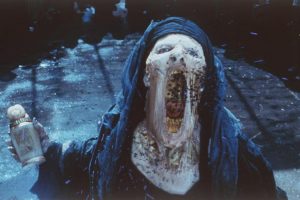
Performances
Brendan Fraser’s portrayal of Rick O’Connell is a significant part of the film’s enduring appeal. He channels the charisma of classic action heroes like Indiana Jones while infusing Rick with a playful, self-aware humor that makes him relatable. Fraser’s physicality and comedic timing are perfectly suited to the role, allowing him to seamlessly navigate between action, romance, and comedic relief. His performance anchors the film, making him a quintessential 90s hero.
Rachel Weisz as Evelyn Carnahan is another standout, delivering a performance that balances intelligence, charm, and vulnerability. Weisz imbues Evelyn with a believable sense of wonder and passion for ancient history, which makes her both compelling and endearing. Her chemistry with Fraser is a vital element of the film’s success, providing a romantic subplot that feels organic and unforced.
Arnold Vosloo brings a magnetic presence to Imhotep, the titular villain. He skillfully conveys a mixture of menace and pathos, making Imhotep more than just a standard antagonist. His motivations, rooted in a tragic love story, add a layer of complexity to what could have been a one-dimensional character. John Hannah as Jonathan adds comic relief without feeling out of place, contributing to the film’s well-rounded tone.
The supporting cast, including Oded Fehr as Ardeth Bay, the Medjai warrior sworn to protect the secrets of Hamunaptra, and Kevin J. O’Connor as Beni, the cowardly and opportunistic rival, bring depth and variety to the story. Their performances enhance the film’s balance of tension, humor, and high stakes.
Pacing and Storytelling
The film’s pacing is brisk, starting with an explosive prologue that sets up Imhotep’s curse and quickly transitioning to the main adventure. While the narrative occasionally dips into exposition-heavy scenes, these moments are typically balanced with action or humor. Sommers’ script is packed with punchy dialogue and one-liners that keep the tone light without undermining the stakes. This balance of adventure and horror, sprinkled with comedic moments, is what sets The Mummy apart from more straightforward horror films and more serious archaeological adventures.
The story incorporates a mix of Egyptian mythology and fantastical elements, making no pretense of historical accuracy but rather aiming to create an entertaining, larger-than-life narrative. The lore surrounding Imhotep’s resurrection, the Book of the Dead, and the ten plagues of Egypt enrich the plot, giving it a mythic scope that feels appropriate for a modern update of a classic monster tale.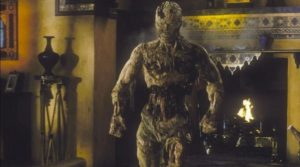
Criticism and Legacy
While The Mummy was well-received by audiences, it garnered mixed reviews from critics, some of whom felt that the film prioritized spectacle over substance and leaned too heavily on action set pieces. However, its unabashed embrace of fun and adventure has helped the film age well. Its mix of genres, blending swashbuckling adventure, light horror, and romance, offers an experience that appeals to a broad range of viewers.
Critics who praised the film often highlighted its self-awareness and likable leads. The film does not take itself too seriously, making it a refreshing departure from more somber or overly realistic action-adventure movies. The humorous interplay between characters and the sense of escapism The Mummy provides have cemented it as a cult favorite. The sequels and spin-offs, including The Mummy Returns and The Scorpion King, as well as theme park attractions and video games, underscore the film’s impact on popular culture.
Its legacy lies in how it managed to revive the mummy archetype for modern audiences while capturing the spirit of old Hollywood serials. The film’s influence can be seen in subsequent adventure-horror films that attempt to strike a similar balance between action, humor, and supernatural elements.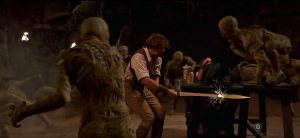
Conclusion
The Mummy (1999) is a quintessential example of late-90s blockbuster filmmaking at its best. Stephen Sommers’ direction, combined with charismatic performances from Brendan Fraser, Rachel Weisz, and Arnold Vosloo, creates a film that is as much about spectacle as it is about storytelling. Its combination of adventure, humor, and horror is executed with enough heart and self-awareness to make it memorable long after the credits roll. While it may not be the most profound film, it remains an enduring piece of entertainment that continues to find new fans and hold a place of nostalgia for those who grew up with it.
For anyone looking for a movie that offers an exhilarating ride filled with curses, heroes, romance, and ancient Egyptian mysticism, The Mummy stands as a testament to the enduring power of well-crafted adventure cinema.



